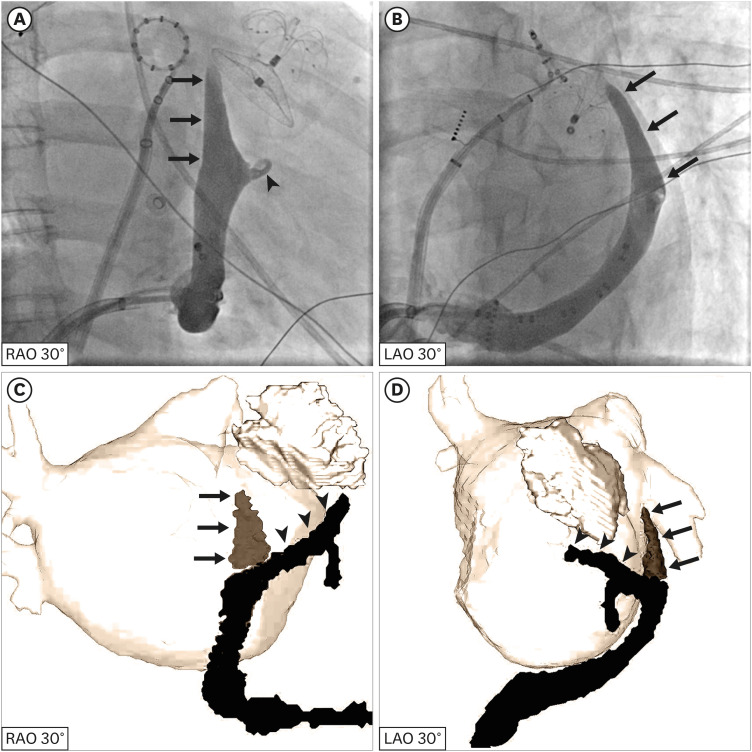Notes
Funding: The study was supported by the National Natural Science Foundation of China (82000064 and U1913210).
Data Sharing Statement: The data generated in this study is available from the corresponding author upon reasonable request.
Author Contributions:
Conceptualization: Zhang HD, Ding L, Tang M.
Data curation: Zhang HD, Ding L, Tang M.
Formal analysis: Zhang HD, Ding L, Tang M.
Funding acquisition: Zhang HD, Tang M.
Investigation: Zhang HD, Tang M.
Methodology: Zhang HD, Ding L, Tang M.
Project administration: Zhang HD, Tang M.
Resources: Zhang HD, Tang M.
Software: Zhang HD.
Supervision: Zhang HD, Tang M.
Validation: Zhang HD, Tang M.
Visualization: Zhang HD, Tang M.
Writing - original draft: Zhang HD.
Writing - review & editing: Zhang HD, Ding L, Tang M.
References
SUPPLEMENTARY MATERIALS
Supplementary Figure 1
Supplementary Figure 2
Figure 1
Images of a 58-year-old woman with a giant VOM. (A, B) The coronary vein angiography reveals a giant VOM. (C, D) Three-dimensional cardiac computerized tomography reconstruction shows the giant VOM. Arrows indicate the VOM. Arrowheads indicate the great cardiac vein.





 PDF
PDF Citation
Citation Print
Print




 XML Download
XML Download